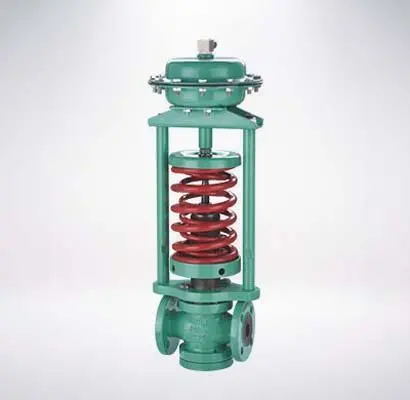Working Principle and Application of Self operated Regulating Valve
Release date:2023-08-25 10:16:14 | Click:

The operation of a self operated regulating valve is based on a basic principle: to use the energy of the process fluid to adjust the position of the valve. These valves integrate a self regulating mechanism that can respond to fluctuations in process variables such as pressure, temperature, or flow rate. This type of mechanism typically includes a diaphragm or piston that responds to the pressure difference across the entire valve, resulting in valve adjustment. By utilizing the inherent energy of the fluid, self actuated valves can effectively maintain the required process conditions without relying on external power sources or complex control systems.
Energy efficiency: Self actuated regulating valves inherently provide energy efficiency as they utilize the energy of the process fluid for operation. This can save costs and reduce the impact on the environment.
Simplicity: These valves have a simple and robust design, making them ideal for situations where complex control systems are impractical or unnecessary.
Failsafe operation: Due to its mechanical properties, self actuated valves typically exhibit fail safe behavior. In the event of a power outage or control system malfunction, the valve often moves to a safe position to mitigate potential hazards.Independence from external power sources: Self actuated valves are particularly advantageous in remote or challenging environments where access to external power sources is limited or unreliable.
Steam regulation in heating systems: Self operated regulating valves are used in the heating system to control steam flow based on temperature fluctuations. The valve can automatically adjust according to temperature changes to maintain appropriate heating conditions.
Pressure relief and safety: In various industrial processes, these valves are used as pressure relief devices. When the pressure exceeds the safety level, the valve opens to release excess pressure and protect equipment and personnel.
Tank liquid level control: The self operated regulating valve is the key to maintaining the required liquid level in the tank and container. As the liquid level changes, the valve adjusts to regulate inflow or outflow to avoid overflow or underflow.
Water flow control: The municipal water distribution system uses self driving regulating valves to manage water flow according to demand. These valves respond to pressure changes within the system to ensure consistency in water supply.Natural gas regulation: In natural gas distribution, a self operated regulating valve controls gas flow based on pressure changes to ensure a stable supply of natural gas to consumers.



